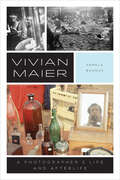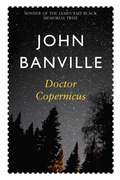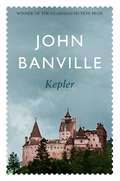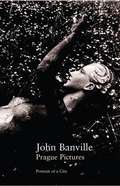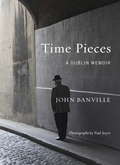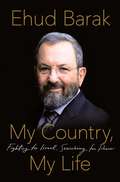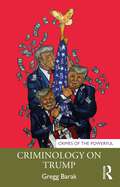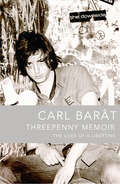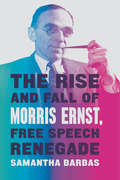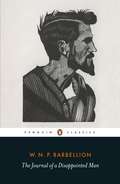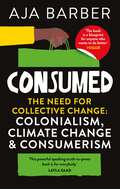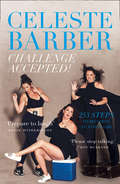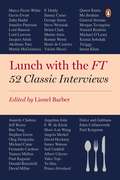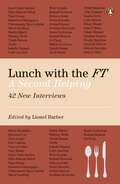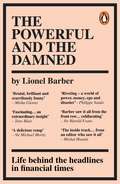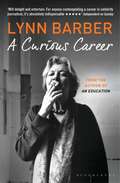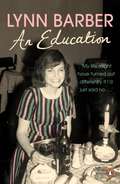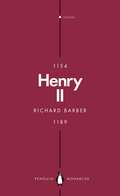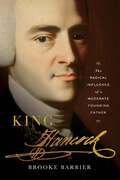- Table View
- List View
Vivian Maier: A Photographer’s Life and Afterlife
by Pamela BannosWho was Vivian Maier? Many people know her as the reclusive Chicago nanny who wandered the city for decades, constantly snapping photographs, which were unseen until they were discovered in a seemingly abandoned storage locker. They revealed her to be an inadvertent master of twentieth-century American street photography. Not long after, the news broke that Maier had recently died and had no surviving relatives. Soon the whole world knew about her preternatural work, shooting her to stardom almost overnight. But, as Pamela Bannos reveals in this meticulous and passionate biography, this story of the nanny savant has blinded us to Maier’s true achievements, as well as her intentions. Most important, Bannos argues, Maier was not a nanny who moonlighted as a photographer; she was a photographer who supported herself as a nanny. In Vivian Maier: A Photographer’s Life and Afterlife, Bannos contrasts Maier’s life with the mythology that strangers—mostly the men who have profited from her work—have created around her absence. Bannos shows that Maier was extremely conscientious about how her work was developed, printed, and cropped, even though she also made a clear choice never to display it. She places Maier’s fierce passion for privacy alongside the recent spread of her work around the world, and she explains Maier’s careful adjustments of photographic technique, while explaining how the photographs have been misconstrued or misidentified. As well, Bannos uncovers new information about Maier’s immediate family, including her difficult brother, Karl—relatives that once had been thought not to exist. This authoritative and engrossing biography shows that the real story of Vivian Maier, a true visionary artist, is even more compelling than the myth.
Vivian Maier: A Photographer’s Life and Afterlife
by Pamela BannosWho was Vivian Maier? Many people know her as the reclusive Chicago nanny who wandered the city for decades, constantly snapping photographs, which were unseen until they were discovered in a seemingly abandoned storage locker. They revealed her to be an inadvertent master of twentieth-century American street photography. Not long after, the news broke that Maier had recently died and had no surviving relatives. Soon the whole world knew about her preternatural work, shooting her to stardom almost overnight. But, as Pamela Bannos reveals in this meticulous and passionate biography, this story of the nanny savant has blinded us to Maier’s true achievements, as well as her intentions. Most important, Bannos argues, Maier was not a nanny who moonlighted as a photographer; she was a photographer who supported herself as a nanny. In Vivian Maier: A Photographer’s Life and Afterlife, Bannos contrasts Maier’s life with the mythology that strangers—mostly the men who have profited from her work—have created around her absence. Bannos shows that Maier was extremely conscientious about how her work was developed, printed, and cropped, even though she also made a clear choice never to display it. She places Maier’s fierce passion for privacy alongside the recent spread of her work around the world, and she explains Maier’s careful adjustments of photographic technique, while explaining how the photographs have been misconstrued or misidentified. As well, Bannos uncovers new information about Maier’s immediate family, including her difficult brother, Karl—relatives that once had been thought not to exist. This authoritative and engrossing biography shows that the real story of Vivian Maier, a true visionary artist, is even more compelling than the myth.
Vivian Maier: A Photographer’s Life and Afterlife
by Pamela BannosWho was Vivian Maier? Many people know her as the reclusive Chicago nanny who wandered the city for decades, constantly snapping photographs, which were unseen until they were discovered in a seemingly abandoned storage locker. They revealed her to be an inadvertent master of twentieth-century American street photography. Not long after, the news broke that Maier had recently died and had no surviving relatives. Soon the whole world knew about her preternatural work, shooting her to stardom almost overnight. But, as Pamela Bannos reveals in this meticulous and passionate biography, this story of the nanny savant has blinded us to Maier’s true achievements, as well as her intentions. Most important, Bannos argues, Maier was not a nanny who moonlighted as a photographer; she was a photographer who supported herself as a nanny. In Vivian Maier: A Photographer’s Life and Afterlife, Bannos contrasts Maier’s life with the mythology that strangers—mostly the men who have profited from her work—have created around her absence. Bannos shows that Maier was extremely conscientious about how her work was developed, printed, and cropped, even though she also made a clear choice never to display it. She places Maier’s fierce passion for privacy alongside the recent spread of her work around the world, and she explains Maier’s careful adjustments of photographic technique, while explaining how the photographs have been misconstrued or misidentified. As well, Bannos uncovers new information about Maier’s immediate family, including her difficult brother, Karl—relatives that once had been thought not to exist. This authoritative and engrossing biography shows that the real story of Vivian Maier, a true visionary artist, is even more compelling than the myth.
Vivian Maier: A Photographer’s Life and Afterlife
by Pamela BannosWho was Vivian Maier? Many people know her as the reclusive Chicago nanny who wandered the city for decades, constantly snapping photographs, which were unseen until they were discovered in a seemingly abandoned storage locker. They revealed her to be an inadvertent master of twentieth-century American street photography. Not long after, the news broke that Maier had recently died and had no surviving relatives. Soon the whole world knew about her preternatural work, shooting her to stardom almost overnight. But, as Pamela Bannos reveals in this meticulous and passionate biography, this story of the nanny savant has blinded us to Maier’s true achievements, as well as her intentions. Most important, Bannos argues, Maier was not a nanny who moonlighted as a photographer; she was a photographer who supported herself as a nanny. In Vivian Maier: A Photographer’s Life and Afterlife, Bannos contrasts Maier’s life with the mythology that strangers—mostly the men who have profited from her work—have created around her absence. Bannos shows that Maier was extremely conscientious about how her work was developed, printed, and cropped, even though she also made a clear choice never to display it. She places Maier’s fierce passion for privacy alongside the recent spread of her work around the world, and she explains Maier’s careful adjustments of photographic technique, while explaining how the photographs have been misconstrued or misidentified. As well, Bannos uncovers new information about Maier’s immediate family, including her difficult brother, Karl—relatives that once had been thought not to exist. This authoritative and engrossing biography shows that the real story of Vivian Maier, a true visionary artist, is even more compelling than the myth.
Vivian Maier: A Photographer’s Life and Afterlife
by Pamela BannosWho was Vivian Maier? Many people know her as the reclusive Chicago nanny who wandered the city for decades, constantly snapping photographs, which were unseen until they were discovered in a seemingly abandoned storage locker. They revealed her to be an inadvertent master of twentieth-century American street photography. Not long after, the news broke that Maier had recently died and had no surviving relatives. Soon the whole world knew about her preternatural work, shooting her to stardom almost overnight. But, as Pamela Bannos reveals in this meticulous and passionate biography, this story of the nanny savant has blinded us to Maier’s true achievements, as well as her intentions. Most important, Bannos argues, Maier was not a nanny who moonlighted as a photographer; she was a photographer who supported herself as a nanny. In Vivian Maier: A Photographer’s Life and Afterlife, Bannos contrasts Maier’s life with the mythology that strangers—mostly the men who have profited from her work—have created around her absence. Bannos shows that Maier was extremely conscientious about how her work was developed, printed, and cropped, even though she also made a clear choice never to display it. She places Maier’s fierce passion for privacy alongside the recent spread of her work around the world, and she explains Maier’s careful adjustments of photographic technique, while explaining how the photographs have been misconstrued or misidentified. As well, Bannos uncovers new information about Maier’s immediate family, including her difficult brother, Karl—relatives that once had been thought not to exist. This authoritative and engrossing biography shows that the real story of Vivian Maier, a true visionary artist, is even more compelling than the myth.
Doctor Copernicus: A Novel (Revolutions Trilogy #1)
by John Banville‘Banville is superb . . . there are not many historical novels of which it can be said that they illuminate both the time that forms their subject matter and the time in which they are read: Doctor Copernicus is among the very best of them’ The EconomistThe first in John Banville Revolutions Trilogy and winner of the James Tait Black Memorial Prize, Doctor Copernicus is a rich historical novel that explores the life of one of history's greatest scientists. The work of Nicholas Koppernigk, better known as Copernicus, shattered the medieval view of the universe and led to the formulation of the image of the solar system we know today. Here his life is powerfully evoked in a novel that offers a vivid portrait of a man of painful reticence, haunted by a malevolent brother and baffled by the conspiracies that rage around him and his ideas while he searches for the secret of life.
Kepler: A Novel (Revolutions Trilogy #2)
by John Banville‘Superbly illuminates the man, the time, and the everlasting quest for knowledge’ Observer Johannes Kepler, born in 1571 in south Germany, was one of the world’s greatest mathematicians and astronomers. The novel Kepler, by John Banville, brilliantly recreates his life and his incredible drive to chart the orbits of the planets and the geometry of the universe while being driven from exile to exile by religious and domestic strife. At the same time it illuminates the harsh realities of the Renaissance world; rich in imaginative daring but rooted in poverty, squalor and the tyrannical power of emperors.
Prague Pictures: Portraits of a City (Writer And The City Ser.)
by John BanvilleFrom one of the foremost chroniclers of the modern European experience, a panoramic view of a city that has seduced and bewitched visitors for centuries. The fourth book in Bloomsbury's Writer and the City series. Prague is the magic capital of Europe. Since the days of Emperor Rudolf II, "devotee of the stars and cultivator of the spagyric art", who in the late 1500s summoned alchemists and magicians from all over the world to his castle on Hradèany hill, it has been a place of mystery and intrigue. Wars, revolutions, floods, the imposition of Soviet communism, and even the depredations of the tourist boom after the Velvet Revolution of 1989 could not destroy the unique atmosphere of this beautiful, proud, and melancholy city on the Vltava. John Banville traces Prague's often tragic history and portrays the people who made it: the emperors and princes, geniuses and charlatans, heroes and scoundrels. He also paints a portrait of the Prague of today, reveling in its newfound freedoms, eager to join the European Community and at the same time suspicious of what many Praguers see as yet another totalitarian takeover. He writes of his first visit to the city, in the depths of the Cold War, and of subsequent trips there, of the people he met, the friends he made, the places he came to know.
Time Pieces: A Dublin Memoir
by John Banville Paul Joyce'If you're interested in Dublin, or if you're interested in the novelist John Banville, or if you're interested in radiantly superb sentences about whatever - I'm all three - then Time Pieces: A Dublin Memoir is a book you'll not be able to put down' The Guardian'A trove of arresting imagery, from the lushly poetic to the luridly absurd ... utterly delightful' Irish Times'Delicious ... Banville's soarings, like a hawk's, are both wild and comprehensive, taking in everything and imagining more' New York TimesFor the young John Banville, Dublin was a place of enchantment and yearning. Each year, on his birthday - the 8th of December, Feast of the Immaculate Conception - he and his mother would journey by train to the capital city, passing frosted pink fields at dawn, to arrive at Westland Row and the beginning of a day's adventures that included much-anticipated trips to Clery's and the Palm Beach ice-cream parlour. The aspiring writer first came to live in the city when he was eighteen. In a once grand but now dilapidated flat in Upper Mount Street, he wrote and dreamed and hoped. It was a cold time, for society and for the individual - one the writer would later explore through the famed Benjamin Black protagonist Quirke - but underneath the seeming permafrost a thaw was setting in, and Ireland was beginning to change.Alternating between vignettes of Banville's own past, and present-day historical explorations of the city, Time Pieces is a vivid evocation of childhood and memory - that 'bright abyss' in which 'time's alchemy works' - and a tender and powerful ode to a formative time and place for the artist as a young man. Accompanied by images of the city by photographer Paul Joyce.
My Country, My Life: Fighting for Israel, Searching for Peace
by Ehud BarakIn the summer of 2000, the most decorated soldier in Israel's history – Ehud Barak – set himself a challenge as daunting as any he had faced on the battlefield: to secure a final peace with the Palestinians. He would propose two states for two peoples, with a shared capital in Jerusalem. He knew the risks of failure. But he also knew the risks of not trying: letting slip perhaps the last chance for a generation to secure genuine peace. It was a moment of truth. It was one of many in a life intertwined, from the start, with that of Israel. Born on a kibbutz, Barak became commander of Israel's elite special forces, then army Chief of Staff, and ultimately, Prime Minister. My Country, My Life tells the unvarnished story of his - and his country's - first seven decades; of its major successes, but also its setbacks and misjudgments. He offers candid assessments of his fellow Israeli politicians, of the American administrations with which he worked, and of himself. Drawing on his experiences as a military and political leader, he sounds a powerful warning: Israel is at a crossroads, threatened by events beyond its borders and by divisions within. The two-state solution is more urgent than ever, not just for the Palestinians, but for the existential interests of Israel itself. Only by rediscovering the twin pillars on which it was built – military strength and moral purpose – can Israel thrive.
Criminology on Trump (Crimes of the Powerful)
by Gregg BarakCriminology on Trump is a criminological investigation of the world’s most successful outlaw, Donald J. Trump. Over the course of five decades, Donald Trump has been accused of sexual assault, tax evasion, money laundering, non-payment of employees, and the defrauding of tenants, customers, contractors, investors, bankers, and charities. Yet, he has continued to amass wealth and power. In this book, criminologist and social historian Gregg Barak asks why and how?This book examines how the United States precariously maintains stability through conflict in which groups with competing interests and opposing visions struggle for power, negotiate rule breaking, and establish criminal justice. While primarily focused on Trump’s developing character over three quarters of a century, it is also an inquiry into the changing cultural character and social structure of American society. It explores the ways in which both crime and crime control are socially constructed in relation to a changing political economy.An accessible and compelling read, this book is essential for all those who seek a criminological understanding of Donald Trump’s rise to power.
Criminology on Trump (Crimes of the Powerful)
by Gregg BarakCriminology on Trump is a criminological investigation of the world’s most successful outlaw, Donald J. Trump. Over the course of five decades, Donald Trump has been accused of sexual assault, tax evasion, money laundering, non-payment of employees, and the defrauding of tenants, customers, contractors, investors, bankers, and charities. Yet, he has continued to amass wealth and power. In this book, criminologist and social historian Gregg Barak asks why and how?This book examines how the United States precariously maintains stability through conflict in which groups with competing interests and opposing visions struggle for power, negotiate rule breaking, and establish criminal justice. While primarily focused on Trump’s developing character over three quarters of a century, it is also an inquiry into the changing cultural character and social structure of American society. It explores the ways in which both crime and crime control are socially constructed in relation to a changing political economy.An accessible and compelling read, this book is essential for all those who seek a criminological understanding of Donald Trump’s rise to power.
Threepenny Memoir: The Lives Of A Libertine
by Carl BaratThe extraordinary life and times of Carl Barat, Libertine.
The Rise and Fall of Morris Ernst, Free Speech Renegade
by Samantha BarbasA long-overdue biography of the legendary civil liberties lawyer—a vital and contrary figure who both defended Ulysses and fawned over J. Edgar Hoover. In the 1930s and ’40s, Morris Ernst was one of America’s best-known liberal lawyers. The ACLU’s general counsel for decades, Ernst was renowned for his audacious fights against artistic censorship. He successfully defended Ulysses against obscenity charges, litigated groundbreaking reproductive rights cases, and supported the widespread expansion of protections for sexual expression, union organizing, and public speech. Yet Ernst was also a man of stark contradictions, waging a personal battle against Communism, defending an autocrat, and aligning himself with J. Edgar Hoover’s inflammatory crusades. Arriving at a moment when issues of privacy, artistic freedom, and personal expression are freshly relevant, The Rise and Fall of Morris Ernst, Free Speech Renegade brings this singularly complex figure into a timely new light. As Samantha Barbas’s eloquent and compelling biography makes ironically clear, Ernst both transformed free speech in America and inflicted damage to the cause of civil liberties. Drawing on Ernst’s voluminous cache of publications and papers, Barbas follows the life of this singular idealist from his pugnacious early career to his legal triumphs of the 1930s and ’40s and his later idiosyncratic zealotry. As she shows, today’s challenges to free speech and the exercise of political power make Morris Ernst’s battles as pertinent as ever.
The Rise and Fall of Morris Ernst, Free Speech Renegade
by Samantha BarbasA long-overdue biography of the legendary civil liberties lawyer—a vital and contrary figure who both defended Ulysses and fawned over J. Edgar Hoover. In the 1930s and ’40s, Morris Ernst was one of America’s best-known liberal lawyers. The ACLU’s general counsel for decades, Ernst was renowned for his audacious fights against artistic censorship. He successfully defended Ulysses against obscenity charges, litigated groundbreaking reproductive rights cases, and supported the widespread expansion of protections for sexual expression, union organizing, and public speech. Yet Ernst was also a man of stark contradictions, waging a personal battle against Communism, defending an autocrat, and aligning himself with J. Edgar Hoover’s inflammatory crusades. Arriving at a moment when issues of privacy, artistic freedom, and personal expression are freshly relevant, The Rise and Fall of Morris Ernst, Free Speech Renegade brings this singularly complex figure into a timely new light. As Samantha Barbas’s eloquent and compelling biography makes ironically clear, Ernst both transformed free speech in America and inflicted damage to the cause of civil liberties. Drawing on Ernst’s voluminous cache of publications and papers, Barbas follows the life of this singular idealist from his pugnacious early career to his legal triumphs of the 1930s and ’40s and his later idiosyncratic zealotry. As she shows, today’s challenges to free speech and the exercise of political power make Morris Ernst’s battles as pertinent as ever.
The Journal of a Disappointed Man: The Journal Of A Disappointed Man; A Last Diary; Enjoying Life And Other Literary Remains
by W. N. BarbellionThe young naturalist W. N. P. Barbellion described this remarkably candid record of living with multiple sclerosis as 'a study in the nude'. It begins as an ambitious teenager's notes on the natural world, and then, following his diagnosis at the age of twenty-six, transforms into a deeply moving account of battling the disease. His prose is full of humour and fierce intelligence, and combines a passion for life with clear-sighted reflections on the nature of death. Barbellion selected and edited this manuscript himself in 1917, adding a fictional editor's note announcing his own demise. This Penguin Classics edition includes 'The Last Diary', which covers the period between submission of the manuscript and Barbellion's actual death in 1919.
Consumed: The need for collective change; colonialism, climate change & consumerism
by Aja Barber'Consumed takes us through the hideously complex topic of fashion and sustainability, from its knotty colonial roots to what everyday people can do to uproot those systems, today.' - Yassmin Abdel-Magied 'SUCH integrity. Aja is no bullsh*t.' - Florence Given Aja Barber wants change. In the 'learning' first half of the book, she will expose you to the endemic injustices in our consumer industries and the uncomfortable history of the textile industry; one which brokered slavery, racism and today's wealth inequality. And how these oppressive systems have bled into the fashion industry and its lack of diversity and equality. She will also reveal how we spend our money and whose pockets it goes into and whose it doesn't (clue: the people who do the actual work) and will tell her story of how she came to learn the truth.In the second 'unlearning' half of the book, she will help you to understand the uncomfortable truth behind why you consume the way you do. She asks you to confront the sense of lack you have, the feeling that you are never quite enough and the reasons why you fill the aching void with consumption rather than compassion. And she makes you challenge this power disparity, and take back ownership of it. The less you buy into the consumer culture the more power you have.CONSUMED will teach you how to be a citizen not a consumer. 'An absolute must-read for any person who wears clothes.' - Orsola de Castro 'A hugely compelling exploration of a culture of exploitation and how, together, we can end it.' - Gina Martin 'Barber's isn't just a voice we should listen to - it is a voice we MUST listen to.' - Clementine Ford 'If you buy one book about sustainable fashion, make it this one. Consumed is an urgent call to action to demand a fashion system that is actually fair for both people and planet, not just Big Fashion billionaires. I adore Aja and I love this brilliant book.' - Venetia La Manna
Challenge Accepted!: 253 Steps To Becoming An Anti-it Girl
by Celeste Barber‘Prepare to laugh’ – Reese Witherspoon 253 steps to becoming an anti-it girl.
Lunch with the FT: 52 Classic Interviews
by Lionel BarberFrom the very first mouthful, 'Lunch with the FT' was destined to become a permanent fixture in the Financial Times.One thousand lunches later, the FT's weekly interview has become an institution. From film stars to politicians, tycoons to writers, dissidents to lifestyle gurus, the list reads like an international Who's Who of our times. Lunch with the FT is a selection of the best: 52 classic interviews conducted in the unforgiving proximity of a restaurant table. From Angela Merkel to Sean 'P. Diddy' Combs, Martin Amis to one of the Arab world's most notorious sons, this book brings you right to the table to decide what you think of or world's most powerful players.
Lunch with the FT: A Second Helping
by Lionel BarberLunch with the FT has been a permanent fixture in the Financial Times for almost 30 years, featuring presidents, film stars, musical icons and business leaders from around the world.The column is now a well-established institution, which has reinvigorated the art of conversation in the convivial, intimate environment of a long and boozy lunch.This new and updated edition includes lunches with:Elon MuskDonald TrumpHilary MantelRichard BransonZadie SmithNigel FarageRussell BrandDavid GuettaYanis VaroufakisJean-Claude JunckerGwyneth PaltrowRebecca SolnitJordan PetersonChimamanda Ngozi AdichieAnd more...
The Powerful and the Damned: Private Diaries in Turbulent Times
by Lionel Barber'Extraordinary' TONY BLAIR'Riveting' - PHILIPPE SANDS'Brutal, brilliant and scurrilously funny' - MISHA GLENNYThe real scoop isn't on the front page'As FT editor, I was a privileged interlocutor to people in power around the world, each offering unique insights into high-level decision-making and political calculation, often in moments of crisis. These diaries offer snapshots of leadership in an age of upheaval...'Lionel Barber was Editor of the Financial Times for the tech boom, the global financial crisis, the rise of China, Brexit, and mainstream media's fight for survival in the age of fake news.In this unparalleled, no-holds-barred diary of life behind the headlines, he reveals the private meetings and exchanges with political leaders on the eve of referendums, the conversations with billionaire bankers facing economic meltdown, exchanges with Silicon Valley tech gurus and pleas from foreign emissaries desperate for inside knowledge, all against the backdrop of a wildly shifting media landscape.The result is a fascinating - and at times scathing - portrait of power in our modern age; who has it, what it takes and what drives the men and women with the world at their feet. Featuring close encounters with Trump, Cameron, Blair, Putin, Merkel and Mohammed Bin Salman and many more, this is a rare portrait of the people who continue to shape our world and who quite literally, make the news.
A Curious Career
by Lynn BarberLynn Barber, by her own admission, has always suffered from a compelling sense of nosiness. An exceptionally inquisitive child she constantly questioned everyone she knew about imitate details of their lives. This talent for nosiness, coupled with her unusual lack of the very English fear of social embarrassment, turned out to be the perfect qualification for a celebrity interviewer. In A Curious Career, Lynn Barber takes us from her early years as a journalist at Penthouse - where she started out interviewing foot fetishists, voyeurs, dominatrices and men who liked wearing nappies - to her later more eminent role interrogating a huge cross-section of celebrities ranging from politicians to film stars, comedians, writers, artists and musicians. A Curious Career is full of glorious anecdotes - the interview with Salvador Dali that, at Dali's invitation, ended up lasting four days, or the drinking session with Shane MacGowan during which they planned to rob a bank. It also contains eye-opening transcripts, such as her infamous interview with the hilarious and spectacularly rude Marianne Faithfull.A wonderfully frank and funny memoir by Britain's greatest and most ferocious interviewer, A Curious Career is also a fascinating window into the lives of celebrities and the changing world of journalism.
An Education
by Lynn BarberWhen the journalist Lynn Barber was 16, she was picked up at a bus-stop by an attractive older man who drew up in his sports car - and her life was almost wrecked. A bright confident girl, on course to go to Oxford, she began a relationship which, incredibly, was encouraged by her conventional, suburban parents and which took her into the louche, semi-criminal world of west London just as the 1960s began. Ruin beckoned, until one day she made an important discovery.'An Education', the opening piece of this fascinating memoir, was highly praised when first published in Granta magazine, and is currently being filmed by the BBC with a Nick Hornby script.
Henry II: A Prince Among Princes (Penguin Monarchs #17)
by Richard BarberHenry II (1154-89) through a series of astonishing dynastic coups became the ruler of an enormous European empire. One of the most dynamic, restless and clever men ever to rule England, he was brought down both by his catastrophic relationship with his archbishop Thomas Becket and his debilitating arguments with his sons, most importantly the future Richard I and King John. His empire may have ultimately collapsed, but in Richard Barber's vivid and sympathetic account the reader can see why Henry II left such a compelling impression on his contemporaries.
King Hancock: The Radical Influence of a Moderate Founding Father
by Brooke BarbierA rollicking portrait of the paradoxical patriot, whose measured pragmatism helped make American independence a reality.Americans are surprisingly more familiar with his famous signature than with the man himself. In this spirited account of John Hancock’s life, Brooke Barbier depicts a patriot of fascinating contradictions—a child of enormous privilege who would nevertheless become a voice of the common folk; a pillar of society uncomfortable with radicalism who yet was crucial to independence. About two-fifths of the American population held neutral or ambivalent views about the Revolution, and Hancock spoke for them and to them, bringing them along.Orphaned young, Hancock was raised by his merchant uncle, whose business and vast wealth he inherited—including household slaves, whom Hancock later freed. By his early thirties, he was one of New England’s most prominent politicians, earning a place on Britain’s most-wanted list and the derisive nickname King Hancock. While he eventually joined the revolution against England, his ever moderate—and moderating—disposition would prove an asset after 1776. Barbier shows Hancock appealing to southerners and northerners, Federalists and Anti-Federalists. He was a famously steadying force as president of the fractious Second Continental Congress. He parlayed with French military officials, strengthening a key alliance with his hospitable diplomacy. As governor of Massachusetts, Hancock convinced its delegates to vote for the federal Constitution and calmed the fallout from the shocking Shays’s Rebellion.An insightful study of leadership in the revolutionary era, King Hancock traces a moment when passion was on the side of compromise and accommodation proved the basis of profound social and political change.
